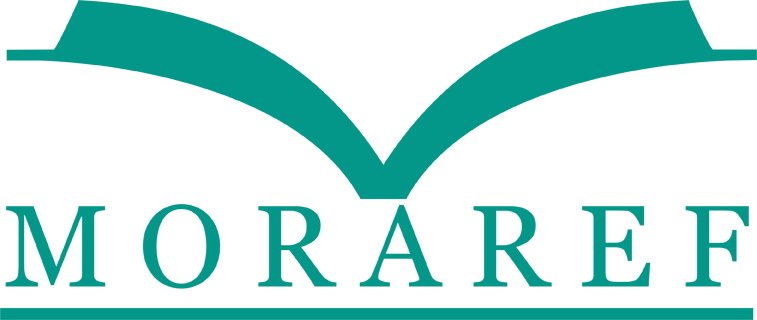Relationship between Dental Caries Risk Factors and Quality of Life in Elementary School Children
Abstract
The prevalence of dental caries among children in Indonesia is still high. Riskesdas data in 2018 shows that children aged 8-12 years are vulnerable to dental caries problems. Dental caries have an impact on children's quality of life. The purpose of this study was to determine the relationship between risk factors for dental caries and children's quality of life and the magnitude of the influence of each risk factor. This type of research is analytic observational with a cross-sectional design. The population is elementary school children in the area of Banyuraden, Gamping, Sleman, Yogyakarta. The time of the study was from March 2021 to August 2021. The sampling technique was carried out by purposive sampling; the number of samples was 200 children. The influence variable is the risk factor for dental caries, and the affected variable is the child's quality of life. The research instrument is a questionnaire consisting of 30 statement items. Assessment of dental caries risk factors includes knowledge of caries, tooth brushing behavior, and cariogenic food eating habits. In contrast, assessing children's quality of life is seen from oral cavity complaints, functional complaints, psychological complaints, and limitations of social interaction. Data were analyzed by univariate, bivariate, and chi-square tests. The results showed more children with low quality of life (67.0%) than children with high quality of life (33.0%). The chi-square correlation test results showed a significant relationship between knowledge about dental caries and children's quality of life (p=0.002; OR=2.77), between tooth brushing behavior and children's quality of life (p=0.012; OR=2.14). as well as between the habit of eating cariogenic foods with the quality of life of children (p=0.020; OR=2.03). This study concludes a significant relationship between knowledge, behavior, and eating habits with children's quality of life.
Keywords
Full Text:
PDFReferences
Fatimatuzzahro N, Prasetya RC, Amilia W. Gambaran Perilaku Kesehatan Gigi Anak Sekolah Dasar Di Desa Bangsalsari Kabupaten Jember. J IKESMA. 2016;12(2):85.
Suratri, M. A. L., Sintawati, F.X., Andayasari L. Pengetahuan, Sikap, Dan Perilaku Orang Tua Tentang Kesehatan Gigi Dan Mulut Pada Anak Usi Taman Kanak-kanak Di Provinsi Daerah Istimewa YogyakartaDan Provinsi Banten Tahun 2014. Media Litbangkes. 2014;26(2):119-126.
Nurwati B, Setijanto D, Budi HS. Hubungan Karies Gigi Dengan Kualitas Hidup Pada Anak Sekolah. J Skala Kesehat Poltekkes Banjarmasin. 2019;10(1):41-47.
Lubis LSI. Penilaian Faktor Risiko Karies pada Anak Usia Dibawah 2 Tahun Menurut American Academy Of Pediatric Dentistry di Kecamatan Medan Baru dan Medan Polonia. 2018.
Nagaraj A, Vishnani P, Yousuf A, Ganta S, Singh K, Acharya S. Perception of Dentists about Caries-risk Assessment tools in Jaipur, India: A Cross-sectional Study. J Int oral Heal JIOH. 2015;7(8):77-81.
Bekes K, Omara M, Safar S, Stamm T. The German version of Early Childhood Oral Health Impact Scale (ECOHIS-G): translation, reliability, and validity. Clin Oral Investig. 2019;23(12):4449-4454. doi:10.1007/s00784-019-02893-1
De Stefani A, Bruno G, Irlandese G, Barone M, Costa G, Gracco A. Oral health-related quality of life in children using the child perception questionnaire CPQ11-14: a review. Eur Arch Paediatr Dent.2019;20(5):425-430. doi:10.1007/s40368-019-00418-8
Lee GHM. Further investigations are needed for the use of the Early Childhood Oral Health Impact Scale in primary care settings. J Evid Based Dent Pract. 2016;16(3):205-208. doi:10.1016/j.jebdp.2016.09.008
Acev DP, Brumini M, Šlaj M, Katić V, Špalj S. Child perceptions questionnaire in Croatia: Two domains for measuring oral health. Acta Stomatol Croat. 2019;53(1):47-54. doi:10.15644/asc53/1/5
Alghadeer A. Cross-Cultural adaptation of a child oral health-related quality of life measure. 2011.
Zaror C, Atala-Acevedo C, Espinoza-Espinoza G, et al. Cross-cultural adaptation and psychometric evaluation of the early childhood oral health impact scale (ECOHIS) in chilean population. Health Qual Life Outcomes. 2018;16(1):1-11. doi:10.1186/s12955-018-1057-x
Shin HS, Han DH, Shin MS, Lee HJ, Kim MS, Kim HD. Korean version of child perceptions questionnaire and dental caries among korean children. PLoS One. 2015;10(2):3-8. doi:10.1371/journal.pone.0116011
Sharna N, Ramakrishnan M, Samuel V, Ravikumar D, Cheenglembi K, Anil S. Association between early childhood caries and quality of life: Early childhood oral health impact scale and PUFA index. Dent J. 2019;7(4). doi:10.3390/dj7040095
Haryani W, Setiyobroto I, Siregar IH, et al. The Influence of the Knowledge about Cariogenic Food Towards Dental Caries and Nutrition Status Among 9-11 Years Old Children. J Kesehat Gigi. 2020;1:40-45.
Montero J, Costa J, Bica I, Barrios R. Caries and quality of life in portuguese adolescents: Impact of diet and behavioural risk factors. J Clin Exp Dent. 2018;10(3):e218-e223. doi:10.4317/jced.54469
Martins-Júnior PA, Ramos-Jorge J, Paiva SM, Marques LS, Ramos-Jorge ML. Validação da versão brasileira do Early Childhood Oral Health Impact Scale (ECOHIS). Cad Saude Publica. 2012;28(2):367-374. doi:10.1590/S0102-311X2012000200015
Randrianarivony J, Ravelomanantsoa JJ, Razanamihaja N. Evaluation of the reliability and validity of the Early Childhood Oral Health Impact Scale (ECOHIS) questionnaire translated into Malagasy. Health Qual Life Outcomes. 2020;18(1):1-11. doi:10.1186/s12955-020-01296-1
Yeh DY, Kuo HC, Yang YH, Ho PS. The responsiveness of patients' quality of life to dental caries treatment - A prospective study. PLoS One. 2016;11(10):1-12. doi:10.1371/journal.pone.0164707
Akbar FH, Pratiwi R, Multazam A. Hubungan Status Karies Gigi dengan Kualitas Hidup Terkait Kesehatan Mulut Anak Usia 8-10 Tahun (Studi Kasus SDN 3 dan SDN 5 Kota Parepare). 2016:2.
Sonoda C, Ebisawa M, Nakashima H, Sakurai Y. Dental caries experience, rather than toothbrushing, influences the incidence of dental caries in young Japanese adults. Community Dent Health. 2017;34(2):118-121. doi:10.1922/CDH_4073Sonoda04
DOI: https://doi.org/10.31983/jkg.v8i2.7668
Article Metrics
Refbacks
- There are currently no refbacks.
| View My Stats |











.png)


.png)
.png)









